Effective Strategies for Stink Bug Management
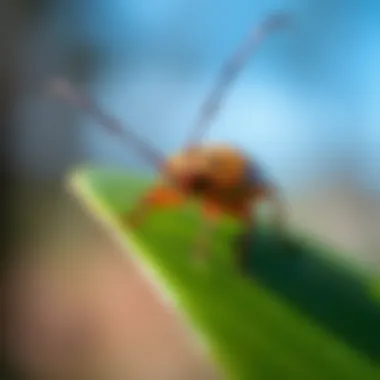
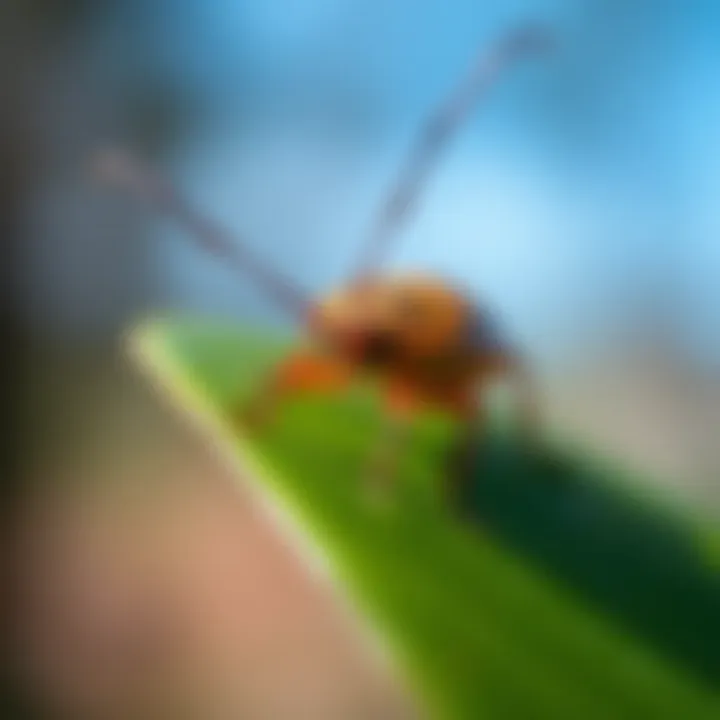
Intro
Stink bugs are a common nuisance for homeowners. Their distinctive smell is not the only thing that makes them a headache; they can also damage crops and plants in gardens. Knowing how to identify, prevent, and treat infestations is crucial for maintaining a comfortable home environment. In this guide, we will discuss effective strategies that target all aspects of managing stink bug populations, particularly for those who encounter them most frequently.
Understanding the life cycle and habits of stink bugs is key. This pest's persistence means that homeowners need to be proactive rather than reactive in their approaches. Let’s dive into identifying these insects and understanding the signs of an infestation before exploring preventive measures and treatment options.
Understanding Stink Bugs
Understanding stink bugs is the first step toward managing their presence effectively in our homes. These little pests, while not particularly harmful to humans, can wreak havoc on gardens and crops, making it crucial for homeowners to grasp their biology and behavior. By familiarizing ourselves with the characteristics of stink bugs, we not only prepare for the unexpected but also learn how to outsmart these nuisances. This section aims to illuminate what makes stink bugs tick, offering insights that can transform confusing encounters into manageable solutions.
Biology and Behavior
Stink bugs belong to the family Pentatomidae, and their most notorious feature is the unpleasant odor they emit when disturbed. The body of a stink bug is somewhat shield-shaped, often measuring between half an inch and three quarters of an inch in length, with colors ranging from brown to green. One remarkable aspect of their biology is the life cycle, which includes five nymphal stages before reaching adulthood. During warmer months, stink bugs are typically active, feeding on plants and reproducing prolifically. As temperatures drop, they seek shelter, often invading homes through tiny cracks and crevices, setting the stage for inconvenience during colder months.
Furthermore, stink bugs are known for their strong aggregation behavior. They tend to cluster together in large groups, which makes spotting an infestation easier but also indicates a significant problem. Understanding this behavior is crucial. Homeowners might mistakenly think it's just a few bugs when, in fact, they could be dealing with a growing army.
When and Where They Appear
Stink bugs are most commonly found in agricultural areas, feeding on crops such as tomatoes, beans, and corn. Timing is everything with these pests. They typically emerge in the spring as temperatures start to rise and can rapidly become a nuisance in residential areas due to their urge to find shelter as the weather changes. Fall is particularly problematic. At this time, stink bugs are in search of warmth and are notorious for infiltrating homes.
Knowing when stink bugs are likely to appear can help homeowners stay one step ahead.
- Spring: Their activity spikes as they search for food sources in gardens.
- Summer: They are abundant outdoors; however, their presence in homes increases as they prepare for winter.
- Fall: The most opportune time for stink bugs to invade, making preventive measures crucial.
Understanding that stink bugs are creatures of both habit and season enables homeowners to adopt strategies that can ward off their unwanted presence.
This knowledge not only empowers individuals to act quickly but also fosters a proactive approach to pest management that minimizes reliance on chemical solutions later on.
"The key to managing stink bugs is understanding their behavior and adapting to seasonal changes, rather than waiting for them to invade."
For additional reading on biology and pest management, check out Wikipedia on Stink Bugs or Pest Control Resources.
Identifying Stink Bugs
Identifying stink bugs is a crucial step in managing them effectively. Understanding what these pests look like and their behavior can significantly increase your chances of tackling an infestation before it spirals out of control. Stink bugs, notable for their pungent odor, can sneak into your home if you don't know what to look for. By recognizing these critters early on, you can implement appropriate strategies before they wreak havoc on your living space.
Key Identification Features
To deal with stink bugs effectively, it is vital to pinpoint distinguishing traits that separate them from other insects. Here are some key features:
- Shape: Stink bugs typically have a distinctive shield-like or oval shape. This profile is a telltale sign when spotting them.
- Coloration: Most commonly, you'll see brown or green varieties. For instance, the brown marmorated stink bug shows a mottled brown appearance that blends into autumn leaves.
- Size: Adults usually measure about ¾ inch in length. Their size allows for easy visibility if you know when and where to look.
- Antennae: Look for long antennae, around half the length of their body, segmented into noticeable sections.
- Wings: Their bodies are covered with a hard shell, and their wings lie flat against their backs when at rest.
Recognizing these features can turn any homeowner into a more proactive pest manager.
Common Species of Stink Bugs
Several species of stink bugs exist, but a few are particularly common, especially in residential areas. Being aware of these can provide further clarity:
- Brown Marmorated Stink Bug: Originally from Asia, this species has become a nuisance across North America. They are known for their resilience against pesticides.
- Green Stink Bug: This species is often larger and has a vivid green hue. Their diversity in appearance can sometimes confuse novice pest managers.
- Triangle Stink Bug: Named for its pointed posterior, it's often found in gardens and crops. While they may not invade homes as aggressively, their identification can help in garden management.
"Different species of stink bugs, while sharing some common traits, can vary in behavior and preferred habitats, which is important for effective control."
By familiarizing yourself with these species, homeowners can better strategize their management efforts. Knowledge is power; knowing your enemy, even in their various forms, is half the battle in keeping your home insect-free.
Assessing the Infestation
Understanding the extent of a stink bug infestation is pivotal for efficient management. An infestation can sneak up on homeowners, often showing signs only when it's reached a critical mass. By identifying early indicators of a problem, one can take timely action, preventing the situation from escalating. Assessing the infestation not only helps to gauge the necessary level of intervention but also to strategize the response effectively. This section delves into how to recognize the telltale signs of these pests and measure the scale of their presence.
Signs of an Infestation
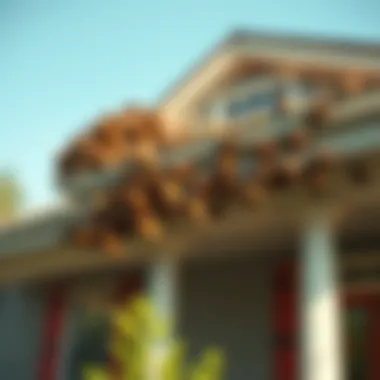
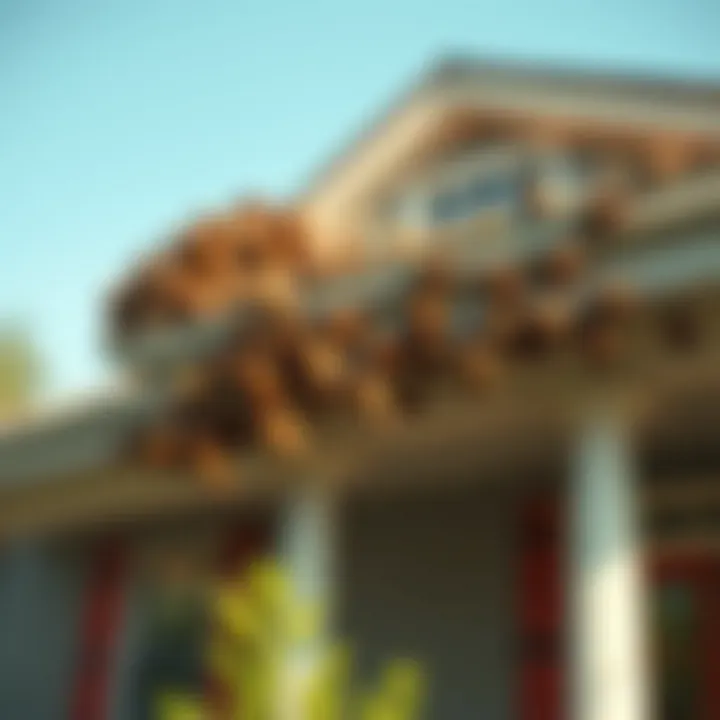
Recognizing the signs of stink bug presence isn't rocket science, but it does require a keen eye and a bit of know-how. Here are some typical indicators:
- Visible Bugs: Obviously, the most straightforward sign is spotting stink bugs themselves. They tend to congregate in corners, near windows, and porches, especially as the chilly weather sets in.
- Smell: If you notice a distinct, unpleasant odor that's hard to pin down, you're likely dealing with stink bugs. When disturbed or threatened, they release a pungent smell that's unmistakable.
- Damage to Plants: Check your garden or houseplants for signs of damage, like yellowing leaves or abnormal fruits. Stink bugs are known for feeding on plant sap, which can lead to broad issues with health in plants.
- Droppings: Tiny black droppings scattered about can indicate stink bug activity. While they might blend into some surfaces, their presence is a red flag.
- Egg Casings: If you come across clusters of yellow-green eggs, you’ve definitely got a stink bug problem. These are usually deposited on the underside of leaves.
It's crucial to remember that just one sign alone may not tell you the whole story; a combination of evidence is typically more telling.
Determining the Extent of the Problem
Once you’ve identified the signs, it's time to measure just how big the problem is. Determining the extent of a stink bug infestation allows homeowners to create a practical action plan.
- Count the Bugs: Take a walk around your home and count how many stink bugs you see. A handful might mean you can manage the problem yourself, while dozens or more often suggests a larger infestation needing serious attention.
- Check Surrounding Areas: Don't just look inside your home; check gardens, garages, and attics. A comprehensive sweep can help understand if the pests are localized or more widespread.
- Look for Additional Evidence: Examine your plants and indoor items for the aforementioned signs such as damage or droppings. This gives clues to the severity and potential next steps.
- Time Frame: Consider how long you've noticed signs of these bugs. If you've been observing them over several weeks or months, chances are the problem is entrenched and more systematic efforts will be needed.
- Seasonal Trends: Stink bugs are more active in certain seasons, particularly as they seek warmth. If you catch them in late fall or early spring, you might be looking at a seasonal invasion rather than a long-term problem.
All these factors should be taken into account to create an accurate picture. Understanding the scope of the infestation will hopefully guide your next steps decisively.
Preventive Measures
When it comes to managing stink bug infestations, taking preventive measures can be your best bet. These pesky creatures seem to have a knack for finding their way into homes, and once they settle in, they can be a stubborn lot. By employing strategic tactics before an infestation strikes, you can save yourself a heap of trouble later on. Preventing their entry not only protects your home but also contributes to a more harmonious living space.
Sealing Entry Points
Stink bugs are resourceful little critters, known for squeezing through the tiniest of gaps. That’s why sealing entry points is essential. You might be surprised at how many unnoticed openings can exist in your home.
- Check Windows and Doors: Inspect window screens for holes or tears. Even minor damage can provide access. Ensure door seals are intact and consider installing door sweeps for added protection.
- Inspect Siding and Foundation: Look for cracks or gaps in your home's exterior. These should not be overlooked, as stink bugs can easily waltz through compromised siding. Consider using caulk to seal these openings effectively.
- Utility Lines and Vents: Don’t ignore spaces where utility lines and vents enter your home. Foam sealant or mesh screens can do wonders in obstructing their movements, ensuring these potential access points are closed off completely.
By diligently sealing these entry points, you can greatly reduce the likelihood of a stink bug invasion.
Managing Outdoor Environments
Keeping a keen eye on your outdoor environments can make all the difference. The areas surrounding your home can be attractive to stink bugs, especially if conditions are just right. Here are some focused strategies:
- Maintain Landscaping: Trim shrubs and branches that are too close to the house. Stink bugs often use trees and plants as launching pads to access your home. Aim to keep a distance of at least a foot between landscaping and your exterior walls.
- Use Mulch Wisely: While mulch can enhance your garden, using it excessively can create a haven for pests, including stink bugs. Consider lighter-colored mulches that reflect heat or organic types that discourage pests.
- Eliminate Standing Water: Stagnant water can attract various insects, which in turn can bring stink bugs. Regularly check your gutters and downspouts to ensure they're clear, making it hard for future infestations to occur.
By managing your outdoor spaces wisely, you set a solid foundation for a stink bug-free home environment.
"Prevention is better than cure" – This saying rings especially true in the case of stink bugs. By taking the time to address entry points and outdoor environments, you're investing in a pest-free living space.
Following these preventive measures diligently can save you the headache of dealing with stink bugs down the road.
Natural Remedies for Stink Bug Control
Natural remedies offer a viable alternative for managing stink bug infestations, particularly appealing to those who prefer eco-friendly solutions over chemical pesticides. The significance of utilizing natural methods lies not only in their environmental benefits but also in their safety for household members and pets. Embracing natural remedies can provide homeowners with peace of mind, knowing they are minimizing the impact on the ecosystem while addressing the pest problem.
Effective natural solutions often incorporate common household items or easily accessible materials that can disrupt the stink bugs’ patterns without putting undue strain on the environment. Many of these remedies leverage scents or ingredients that stink bugs find repellent, contributing to an integrated pest management approach that is both sustainable and practical.
Essential Oils and Their Uses
Essential oils have gained traction in recent years as a natural way to deter stink bugs. These concentrated plant extracts hold powerful properties that can make a home less inviting to pests. Some essential oils, such as peppermint, lavender, and eucalyptus, are particularly effective in repelling stink bugs due to their strong fragrances.
Using essential oils can be as easy as adding a few drops of oil to water in a spray bottle and applying the mixture around entry points of the home. Consider these effective essential oils for stink bug control:
- Peppermint Oil: Known for its strong scent, it confuses and deter stink bugs.
- Lavender Oil: Not only pleasing to humans, stink bugs avoid it due to its overpowering aroma.
- Eucalyptus Oil: Its scent can create an inhospitable environment for stink bugs.
It’s crucial to ensure that any mixture used is properly diluted. Pure essential oils can be too potent and could potentially harm plants or other insects that are beneficial. Establishing a routine of spraying these oils can create a lingering repellent effect.
"Natural pest control strategies harness the power of nature while ensuring the safety and well-being of your family."
Homemade Traps
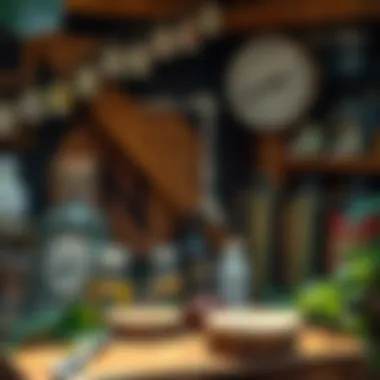

Crafting homemade traps represents another effective approach to managing stink bug populations. These traps typically involve simple ingredients and materials found at home. A well-designed trap can catch stink bugs and prevent them from entering your living space.
Here’s an easy method for constructing a suction trap:
- Materials Needed:
- Trap Setup:
- A large jar or container
- Some detergent or dish soap
- Water
- A flashlight
- Fill the container with water and add a few drops of detergent. The detergent breaks the surface tension, making it difficult for bugs to escape.
- At night, use a flashlight to attract stink bugs toward the jar. Once they get close, they'll fall in and be unable to swim back to the surface.
Alternatively, a funnel trap can also be effective. Here’s how to set it up:
- Make a funnel out of a plastic bottle or use a funnel-shaped item.
- Position it upside down in a container filled with soapy water.
- Allow stink bugs to crawl into the funnel and drop into the soapy water below.
Both traps can help monitor and reduce stink bug populations without relying on harsh chemicals. Regular maintenance is necessary to empty and clean the traps, ensuring they remain effective over time.
Natural remedies such as essential oils and homemade traps allow homeowners to take charge of stink bug management while fostering a healthier living environment. Investing time in these strategies can yield a considerable reduction in pest presence, creating a more serene home atmosphere.
Chemical Solutions
Chemical solutions play a crucial role in the effective management of stink bug infestations. While natural remedies can be helpful, they often lack the potency needed in severe cases. Utilizing pesticides allows homeowners to tackle these resilient pests swiftly. It's essential, however, to approach chemical control with caution and knowledge. Here, we will look at the types of pesticides available and how to apply them for maximum efficacy.
Types of Pesticides
When selecting an appropriate pesticide for stink bugs, consider the following categories:
- Insecticides: These target stink bugs directly, disrupting their nervous system. Products containing pyrethroids, like permethrin and cypermethrin, are popular due to their effectiveness.
- Systemic pesticides: These are absorbed by plants and, when stink bugs consume plant tissues, they ingest the poison. Imidacloprid is a common example, but usage requires care to avoid harming beneficial insects.
- Contact insecticides: These work when applied directly to the pests or their habitats. They can quickly reduce the population but may need reapplication.
- Insect growth regulators (IGRs): IGRs disrupt the development of stink bugs, preventing them from maturing and reproducing. They can be a long-term solution without immediate knockdown effects.
Each type comes with its own set of benefits and limitations, so proper research on product specifications is essential before use.
Application Guidelines
Applying pesticides effectively can make all the difference in the battle against stink bugs. Here are some guidelines to follow for successful application:
- Read the label: Every pesticide carries specific instructions regarding dosage and application method. Failing to adhere to these can result in ineffectiveness or harm.
- Timing is key: The best time to apply pesticides is during early morning or late evening when stink bugs are most active. Avoid application during rain or windy conditions.
- Choose the right delivery method: Depending on the scale of the infestation, you may opt for spray, granules, or aerosol formulations. For significant infestations, a sprayer can cover larger areas more efficiently.
- Wear protective gear: Always wear gloves, masks, and goggles to protect yourself from exposure. Safety should be your priority.
- Follow up: Monitor the treated areas regularly. If you notice a resurgence, you may need to reapply or switch to a different type of pesticide for better efficacy.
"Using chemical solutions can give you an upper hand in controlling stink bug chaos, but knowledge and caution are your best allies.”
By understanding the types of pesticides available and following proper application guidelines, homeowners can confidently manage stink bug infestations, leading to healthier living environments. Remember to check local regulations regarding pesticide use, as some may be restricted in certain areas for environmental considerations.
Professional Pest Control Services
Handling stink bug infestations can often feel like trying to catch smoke with your bare hands. While preventive measures and home remedies serve their purpose, there are instances when calling in the big guns—professional pest control services—becomes crucial.
The value of expert assistance cannot be overstated. These professionals come equipped not only with the right tools but also with a wealth of experience and knowledge. They are trained to assess the situation quickly and implement effective solutions tailored to the specific type of infestation in your home.
When to Call a Professional
Knowing when to reach out for help can save you both time and frustration. Here are some indicators that it may be time to call a professional:
- Severe or Widespread Infestations: If your home is crawling with stink bugs, and you find it difficult to manage them despite your best efforts, don't hesitate. Professionals can identify where they are entering and help eradicate them more effectively.
- Visible Damage to Property: If you begin to notice signs of damage, such as plants suffering from their feeding—especially if you grow fruits or vegetables—it's a clear signal that the problem is above and beyond DIY efforts.
- Allergic Reactions or Health Concerns: Stink bugs are not known to bite, yet their secretions can cause allergic reactions in some individuals. If you or someone in your family has started experiencing allergy-like symptoms, it’s time to call for assistance.
- Repeated Infestations: If this is not your first rodeo with stink bugs despite preventive measures you've implemented, professional pest control may provide the permanence you need.
What to Expect from Service Visits
When you call a pest control service, here's what typically happens:
- Initial Assessment: A professional will generally conduct a thorough inspection of your home. They will identify entry points, assess the extent of the infestation, and gather information that will inform their treatment plan.
- Tailored Treatment Plans: The approach to treatment varies widely based on different factors—home structure, the size of the infestation, and personal preferences regarding chemical solutions. Professionals often have access to specialized tools and pesticides that are more effective than over-the-counter options.
- Implementation: After devising a plan, the service will begin treatment. This might involve spraying pesticides, setting traps, or using other methods to control the stink bug population effectively.
- Follow-up Visits: More often than not, pest control companies will schedule follow-up visits to ensure the pests have been successfully eradicated. They will assess the effectiveness of their treatment and make adjustments if necessary.
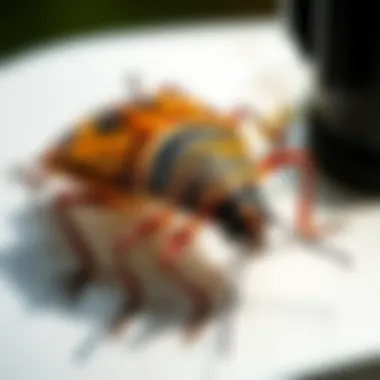
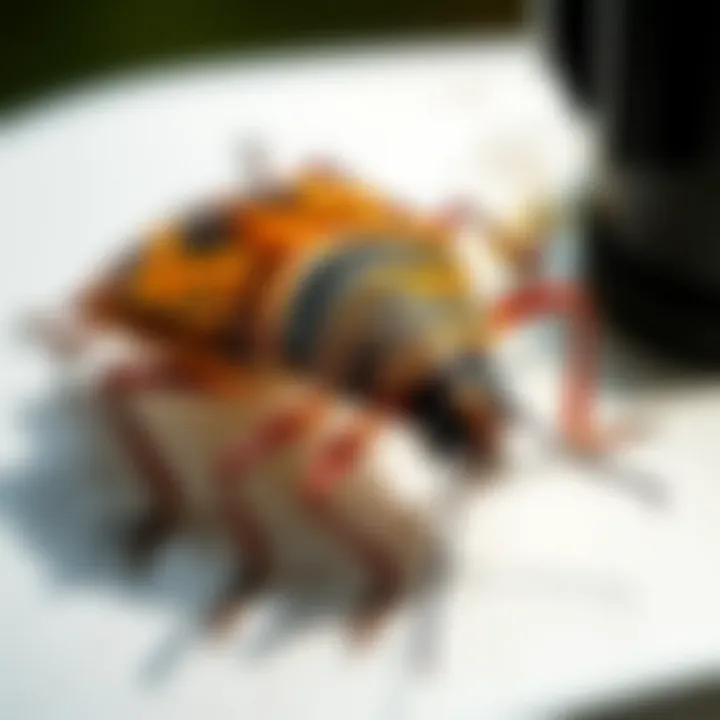
"Prevention is better than cure, but when bugs invade, sometimes expertise is the best course of action."
Overall, engaging professional pest control services adds value not just by eliminating the immediate problem but also by providing insights and recommendations to prevent future infestations. For homeowners already stretched thin managing various responsibilities, leaving stink bug control to the pros allows peace of mind.
Long-term Management Strategies
Long-term management strategies for stink bug infestations are crucial for homeowners seeking not just to eliminate these unwelcome guests, but to prevent future invasions as well. Unlike short-term solutions, which may provide immediate relief, long-term strategies focus on creating an inhospitable environment for stink bugs over time. This often involves an integrated approach that combines prevention, monitoring, and maintenance practices.
These strategies are beneficial for several reasons. First and foremost, they reduce the reliance on harmful pesticides, thereby promoting a healthier living space. Secondly, they address the root causes of infestations rather than simply masking the symptoms. Finally, implementing these measures can often save money in the long run by decreasing the frequency and need for pest control services.
Integrating Prevention and Elimination Tactics
When it comes to managing stink bugs, integrating prevention with targeted elimination tactics is key. For instance, sealing all cracks and crevices in walls, windows, and doors is an essential first step in prevention. This creates a barrier that makes entry difficult for stink bugs. Alongside this, employing natural deterrents like planting marigolds or using essential oils that repel stink bugs can create an environment that is less appealing to these pests.
On the elimination front, options include using traps that specifically attract stink bugs, effectively reducing their numbers in your home. Here’s a quick overview of both prevention and elimination techniques:
- Prevention Tactics:
- Elimination Tactics:
- Sealing entry points
- Planting pest-repellent plants
- Keeping outdoor lights off at night to avoid attracting them
- Using traps specifically designed for stink bugs
- Applying targeted natural or chemical insecticides as needed
By blending these methods, you can tackle the problem from both ends and create an ongoing defense against future infestations.
Monitoring and Maintenance Practices
Once you’ve established a good preventive and elimination strategy, monitoring becomes essential in long-term management. Keeping an eye on potential hotspots where stink bugs might return is a practice every homeowner should adopt. Checking for signs of infestations, such as the presence of eggs or the insects themselves, can catch potential problems before they escalate.
Regular maintenance of your yard and home environment is equally important. Trimming back overgrown vegetation, keeping the lawn in check, and managing debris can deter stink bugs from finding a comfortable place to settle.
" A proactive approach is often more effective than reactive measures in pest management."
Creating a checklist might help in your efforts:
- Monthly checks of known hotspots:
- Seasonal yard maintenance:
- Window frames
- Basement and crawl spaces
- Attics and other seldom-used areas
- Clearing fallen leaves and debris
- Pruning plants to reduce shelter options
In sum, by incorporating these monitoring and maintenance strategies, you can stay ahead of stink bugs and ensure that your home remains a sanctuary rather than a breeding ground for pests.
Culmination
For homeowners, the resilience of stink bugs makes it imperative to act swiftly and with intent. Effective techniques to eradicate these pests can save not only your peace of mind but also the integrity of your home environment. Incorporating a combination of natural remedies alongside chemical solutions can lead to a synergistic effect, maximizing the chances of successful pest management.
Recap of Effective Techniques
To summarize the key points discussed:
- Prevention First: Seal entry points in your home, ensuring that windows, doors, and cracks are properly fitted and maintained.
- Monitoring: Keep an eye on outdoor areas and indoor spaces for early signs of infestation. Being vigilant can save a lot of hassle.
- Natural Remedies: Essential oils such as peppermint or neem can deter stink bugs and should be part of your arsenal against these pests.
- Chemical Solutions: When the situation escalates beyond manageable levels, using targeted pesticides, as recommended, can provide immediate relief. Always follow guidelines to ensure safety.
- Professional Help: Know when to call in the experts. They can offer insights and advanced methods that might not be accessible to general homeowners.
Through understanding and implementation of these measures, one can significantly reduce the likelihood of pesky stink bugs becoming a problem.
Encouragement for Ongoing Vigilance
The battle against stink bugs doesn’t end after applying the above strategies. Regular monitoring and maintenance of your living spaces will help keep these pests at bay. It's not just about a one-time cleanup; ongoing vigilance is essential.
Establish a routine check, especially during peak seasons when stink bugs are more active. Educate household members about recognizing these pests and what actions to take if they spot them.
Overall, maintaining a proactive stance against stink bugs and other household pests goes a long way in safeguarding your home. Keep your defenses up, and don’t hesitate to revisit and adapt your strategies as needed. For resources and more information, here are some helpful links:
Ultimately, by staying informed and proactive, homeowners can enjoy a pest-free environment.



